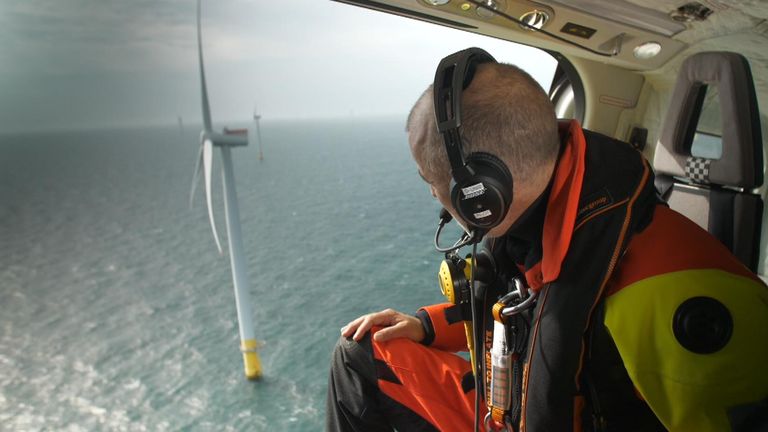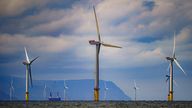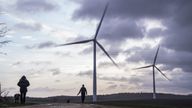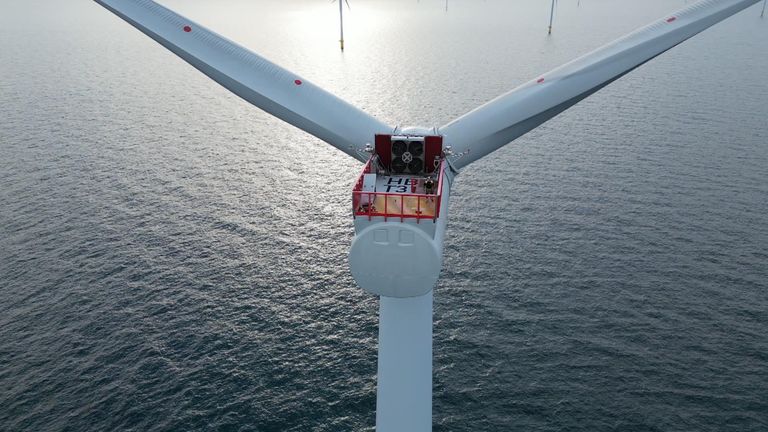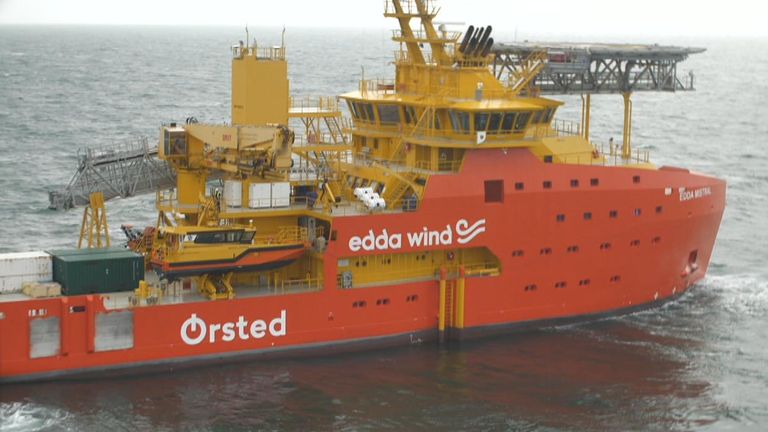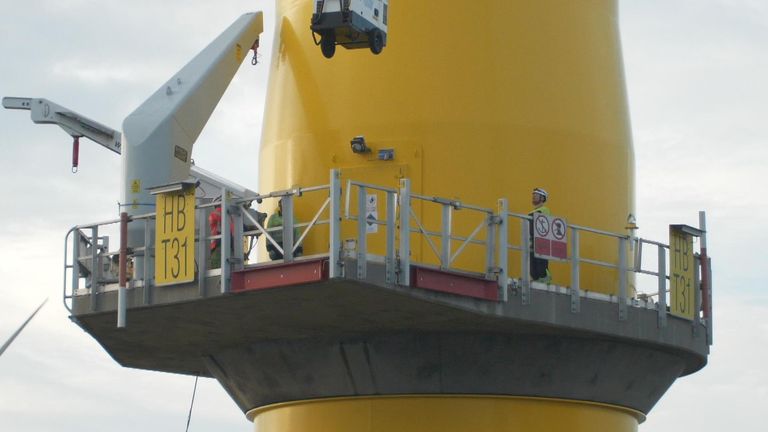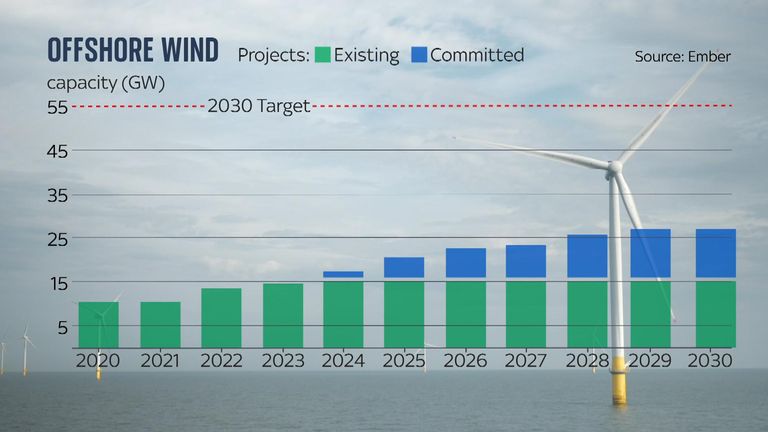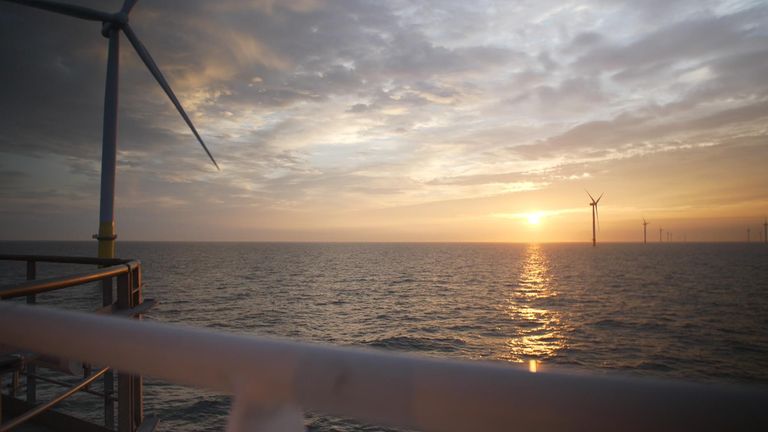New UK wind projects a good first step – but big challenges remain
It takes more than half an hour by helicopter from Hull to get to the world’s largest offshore wind farm 60 miles off the East Yorkshire coast.
Hornsea 2 is vast, 30 miles long and 10 miles wide, but it’s about to get a whole lot bigger.
As part of the government’s auction of renewable energy “contracts for difference” Orsted, the Danish offshore wind developer, has secured funding for two new projects – Hornsea 3 and Hornsea 4 – more than doubling the size of the wind zone.
It’s good news for Orsted and other wind developers.
Last year, partly as a result of high inflation and supply chain costs, no projects managed to secure government backing.
And it’s a success for the government too.
Labour campaigned on a promise to lower bills and deliver a zero-carbon electricity system by 2030. This latest auction was the first major test of their progress towards that target.
Overall it secured nearly 5GW (gigawatts) of new offshore wind capacity.
Importantly, a contract was awarded for Greenvolt, one of the world’s largest floating offshore wind projects.
Compared with fixed offshore wind projects like Hornsea it’s small – just 0.4GW.
But sitting in deep water 50 miles off Aberdeen, it will be an early test of a technology that could allow more wind farms in more convenient locations around the UK.
The government has said it wants the new state-owned power business, GB Energy, to pioneer floating offshore wind as a technology it can export worldwide – boosting the UK economy.
The auction also secured nearly 5GW of new solar, onshore wind and tidal generation projects.
It’s a good first step for the government, but it still leaves a 20GW gap to get to its target of 55GW of offshore wind generation by 2030.
If it can deliver on the pledge, however, it should be good news for consumers.
Though “contracts for difference” are ultimately funded through customers’ bills, the expectation is that once more renewable energy is on the grid, it should bring long-term savings for consumers.
The extreme price spikes we have experienced in recent years have been due to the volatile price of natural gas.
The less of that we need to burn for electricity, the cheaper our bills will be.
Trade organisation RenewableUK said power generated by this year’s newly commissioned projects would save consumers nearly £3bn a year compared to the alternative cost of gas by 2030.
Be the first to get Breaking News
Install the Sky News app for free



Read more from Sky News:
New Shetland wind farm could power 500,000 homes
Drax agrees to pay £25m for misreporting data on wood it burns
But securing more renewable generation is only part of the challenge.
The variable nature of wind and solar power means the UK will need the ability to store that excess power for days when the sun isn’t shining or the wind isn’t blowing.
Those technologies – like batteries or using spare electricity to make and store hydrogen gas – will need to scale massively.
So too will connections on the national grid to move power from remote sites – many in Scotland and the North Sea – to homes where it is needed.
This is a good start for the government, but there are strong headwinds to overcome.
